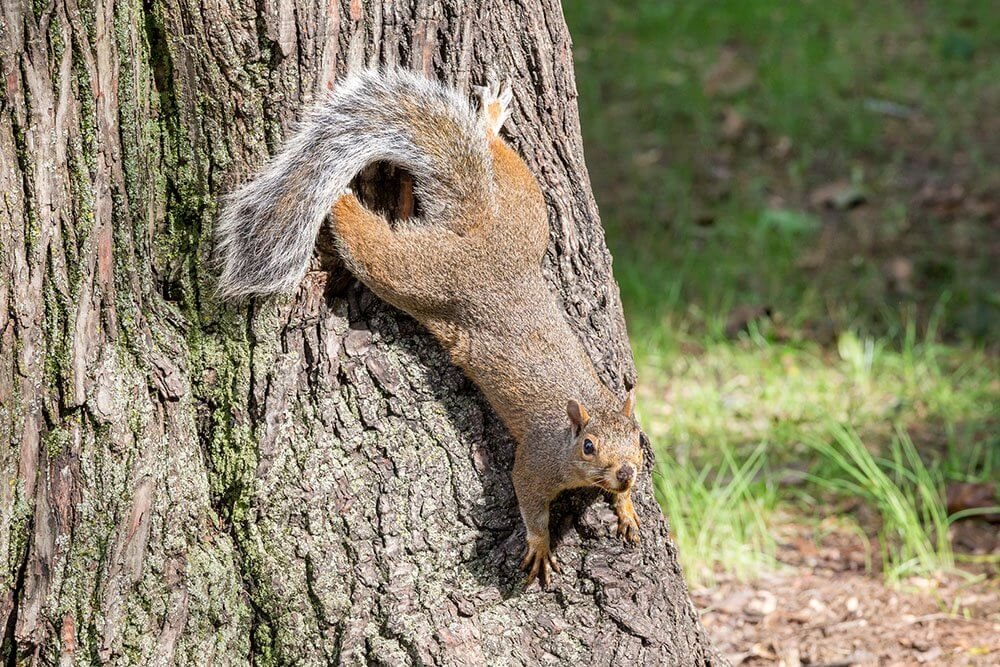Trees offer a multitude of enjoyment and benefits, which is a common thought among people. Regrettably, this sentiment is also shared by many animals that frequent backyards.
Homeowners may find delight in watching squirrels play in the treetops or deer wandering into their yard, but these creatures can also harm trees by eating leaves and causing damage. If you have witnessed such behavior or noticed signs of animal damage, it is important to take action to protect your trees before they sustain irreversible damage.
If you are unsure how to recognize the damage caused by rodents, this article provides information on common pests in Western North Carolina, including rodents. This article outlines four methods to safeguard your trees from animals such as rodents and deer while avoiding harm to these creatures.
4 Tips on Protecting Your Trees from Deer and Rodents
The most effective method for deterring animals that view your trees as food will depend on the type of animal and your personal comfort level and budget. If a chosen approach proves ineffective, another option can be pursued.
Here we have gathered four simple methods you can use to protect your yard’s trees from rodents and other pesky animals.
1. Barriers
Wild animals have no set boundaries unless they are established. While perimeter fencing can be an effective solution, it may be expensive depending on the size of your property and the materials used. To keep squirrels out, fences must be at least four to five feet high, and to prevent burrowing rodents, they must be buried a foot below ground level.
A more cost-effective alternative, if you opt for this route, is to install wire fencing and plant a hedge in front to blend in. The bottom portion of the fence and an additional foot below the surface must be covered with finer mesh to prevent rodent infiltration. When selecting a hedge, select a species that deer do not find appealing to prevent them from causing damage.
As an alternative to a perimeter fence, you can also protect individual trees by fencing them in. For younger, more delicate trees, wire mesh, ventilated PVC tubing, or adjustable tree guards can be used to surround the trunk, offering protection that lasts several seasons. Ensure that the PVC or tree guard is loose with adequate ventilation holes. As the tree grows, adjust the size of the tree guard or replace it with a larger one.
To deter smaller animals, ensure that the mesh size is small enough and that the “tree fence” starts at the base of the trunk. To keep deer away, ensure the fence extends upward to six feet.
2. Intimidating Objects
Similar to a scarecrow in a cornfield or a decoy owl on a roof, scaring animals off with shiny objects, especially ones that move and make noise in the wind, is a possibility. Before attaching any objects to your trees, consult with an arborist.
Wind chimes on the eaves near trees and motion-activated devices placed near the trunks may effectively scare off the animals, causing damage. Some of these devices even spray water to deter deer.
3. All-Natural Repellents
Using natural, plant-based repellents to protect trees from rodents and other pests is an environmentally friendly solution that also protects pets and their habitat from harmful chemicals.
4. Chemical Repellents
If natural repellents are not effective, chemical repellents can be used as a solution. However, be cautious and read the product information carefully before use to prevent accidental dosing of your pets.
Have a Certified Arborist Inspect Your Trees for Animal Damage.
Animals can cause significant damage to your trees without you noticing. Here at Earthworks Tree Services, our certified arborists provide personalized tree care and services to maintain the beauty and health of your property. Contact us here for a professional tree health inspection, especially if you suspect your trees are suffering from animal damage or other stress.

